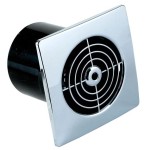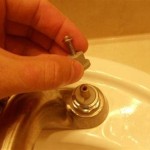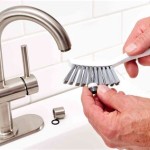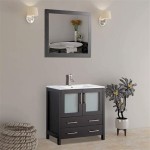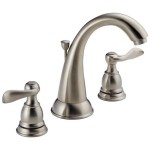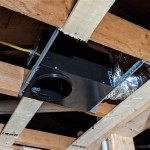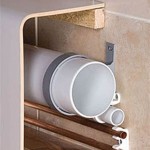Can You Use Normal Plasterboard in a Bathroom?
The question of whether standard plasterboard can be used in a bathroom setting is a common one among homeowners and contractors alike. The answer, however, is not a simple yes or no. Several factors must be considered, primarily concerning the bathroom's environment and the properties of regular plasterboard. Understanding these factors is crucial for making an informed decision and avoiding costly repairs down the line.
Plasterboard, also known as drywall or gypsum board, is a ubiquitous building material used to create interior walls and ceilings. It consists of a gypsum core sandwiched between two layers of paper. Its popularity stems from its affordability, ease of installation, and ability to create a smooth surface ready for painting or wallpapering. However, standard plasterboard is designed for use in dry environments. Bathrooms, on the other hand, are inherently humid and prone to moisture, presenting a significant challenge for this material.
The primary concern with using regular plasterboard in a bathroom is its susceptibility to moisture damage. When exposed to excessive humidity or direct water contact, the gypsum core can absorb moisture, leading to several undesirable consequences. These include swelling, softening, and eventual disintegration of the board. The paper facing can also peel, bubble, and become a breeding ground for mold and mildew. Over time, this deterioration can compromise the structural integrity of the wall or ceiling, requiring replacement. The presence of mold, furthermore, presents a health hazard.
While using standard plasterboard in a bathroom is generally discouraged for areas directly exposed to water, some scenarios might allow for its use, but with careful consideration and preventative measures. For instance, in a well-ventilated bathroom with minimal steam production and no direct water contact on the walls, standard plasterboard might suffice. However, this is contingent on implementing strategies to mitigate moisture exposure, such as thorough sealing of joints and edges, and application of a high-quality, moisture-resistant paint.
Moisture Resistance and Specialized Plasterboard
The fundamental reason against using standard plasterboard in bathrooms lies in its lack of inherent moisture resistance. Standard plasterboard is designed to perform optimally in dry, interior environments. The paper facing, while providing a smooth surface for finishing, is also highly absorbent. Even with paint, the paper and the gypsum core beneath remain vulnerable to moisture penetration. This vulnerability is significantly amplified in the humid environment of a bathroom.
Recognizing the limitations of standard plasterboard in damp environments, manufacturers have developed specialized moisture-resistant plasterboard, often referred to as "green board" due to its characteristic green paper facing. This type of plasterboard is engineered with enhanced water resistance properties. The gypsum core is treated with water-repellent additives, and the paper facing is also designed to resist moisture absorption. While not waterproof, moisture-resistant plasterboard offers significantly greater protection against humidity and occasional water splashes compared to standard plasterboard.
The installation process for moisture-resistant plasterboard is generally similar to that of standard plasterboard. However, proper sealing of joints and edges is even more critical. Using a moisture-resistant joint compound and applying multiple coats of a high-quality, moisture-resistant paint or sealant is essential to create a truly effective barrier against moisture penetration. Even with moisture-resistant plasterboard, it's crucial to address the underlying causes of moisture problems, such as inadequate ventilation.
Building Regulations and Codes
Building regulations often dictate the type of plasterboard required for use in bathrooms and other wet areas. These regulations are designed to ensure the safety and durability of construction and prevent moisture-related problems that can lead to structural damage and health hazards. Local building codes may vary, so it's always essential to consult with local authorities or a qualified building inspector to determine the specific requirements for your area.
Many building codes require the use of moisture-resistant or waterproof plasterboard in areas that are directly exposed to water, such as shower enclosures and tub surrounds. In general bathroom areas, where direct water exposure is less likely but humidity levels are still high, moisture-resistant plasterboard is often recommended or required. Adhering to these regulations is not only essential for legal compliance but also for ensuring the long-term performance and safety of the bathroom structure.
Using the correct type of plasterboard is a key element in ensuring compliance with building regulations. Incorrect usage may lead to failed inspections, which can result in costly rework and delays in project completion. Moreover, non-compliance can potentially invalidate insurance claims if moisture-related damage occurs in the future. For these reasons, it is imperative to verify the specific building code requirements for bathroom construction in the relevant jurisdiction before commencing any work.
Alternatives and Best Practices for Bathroom Walls
While moisture-resistant plasterboard is a significant improvement over standard plasterboard, it is not entirely waterproof. For areas that are frequently exposed to water, such as shower walls and tub surrounds, other materials offer superior water resistance and durability. These alternatives include cement board, tile backer board, and waterproof wall panels.
Cement board is a concrete-based material that is completely waterproof and highly resistant to mold and mildew. It provides an excellent substrate for tiling and can withstand constant exposure to water without deteriorating. Tile backer board is another option that offers similar properties, often made from fiberglass or other synthetic materials. These boards are designed to provide a stable and waterproof base for tile installations in wet areas.
Waterproof wall panels are another increasingly popular alternative. These panels are typically made from PVC or acrylic and offer a seamless, waterproof surface that requires minimal maintenance. They are available in a variety of colors and patterns, providing a decorative and functional solution for bathroom walls. When using any of these alternatives, it is still crucial to follow proper installation procedures, including sealing joints and edges to prevent water penetration.
Proper ventilation is crucial, regardless of the type of plasterboard or wall material used in a bathroom. A well-functioning exhaust fan can effectively remove moisture-laden air, reducing humidity levels and preventing condensation. The exhaust fan should be sized appropriately for the size of the bathroom and used regularly during and after showers or baths. Additionally, ensuring adequate airflow throughout the bathroom can help to prevent moisture buildup and promote drying.
In summary, while standard plasterboard *can* theoretically be used in certain bathroom areas if strict preventative measures are taken, it is generally not recommended. Moisture-resistant plasterboard is a better choice for most bathroom applications, but for areas with direct and frequent water exposure, alternatives like cement board, tile backer board, or waterproof wall panels offer the most reliable solution. Proper installation, sealing, and ventilation are crucial for ensuring the long-term durability and performance of bathroom walls, regardless of the materials used.

Can You Use Normal Plasterboards In A Bathroom The Diy Fix

How To Install Moisture Resistant Plasterboard In The Bathroom

Plaster Damp And Damaged Behind Tiles In Shower Tiling Forum Advice Tilers

Moisture Resistant Plasterboard Building Materials Mick George

3 Golden Reasons Why Is Worth To Use Moisture Resistant Plasterboard Infographic

Acoustic Plasterboard Vs Normal What S Better Easy Home Soundproofing

What Plasterboard Can I Use In A Bathroom Plaster S
Tanking A Shower Bathroom Guru

Shower Bath Tiling Preparation Plaster And Wooden Windowsill Forum Advice Tilers

Acoustic Plasterboard Vs Normal For Noise Reduction
Related Posts
